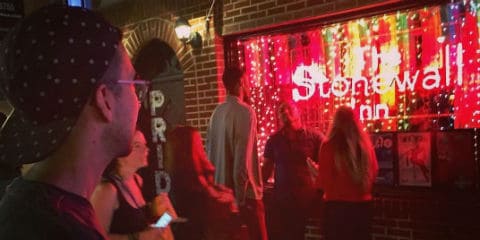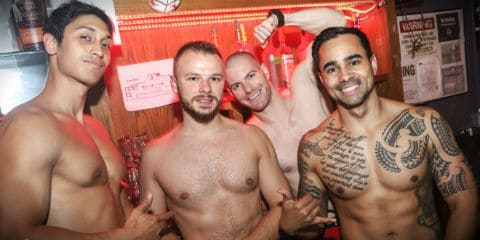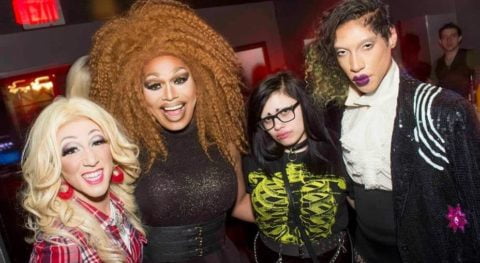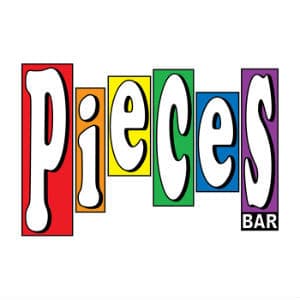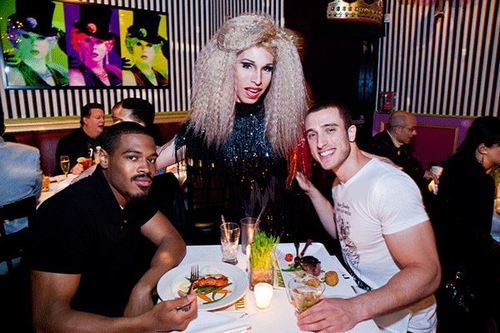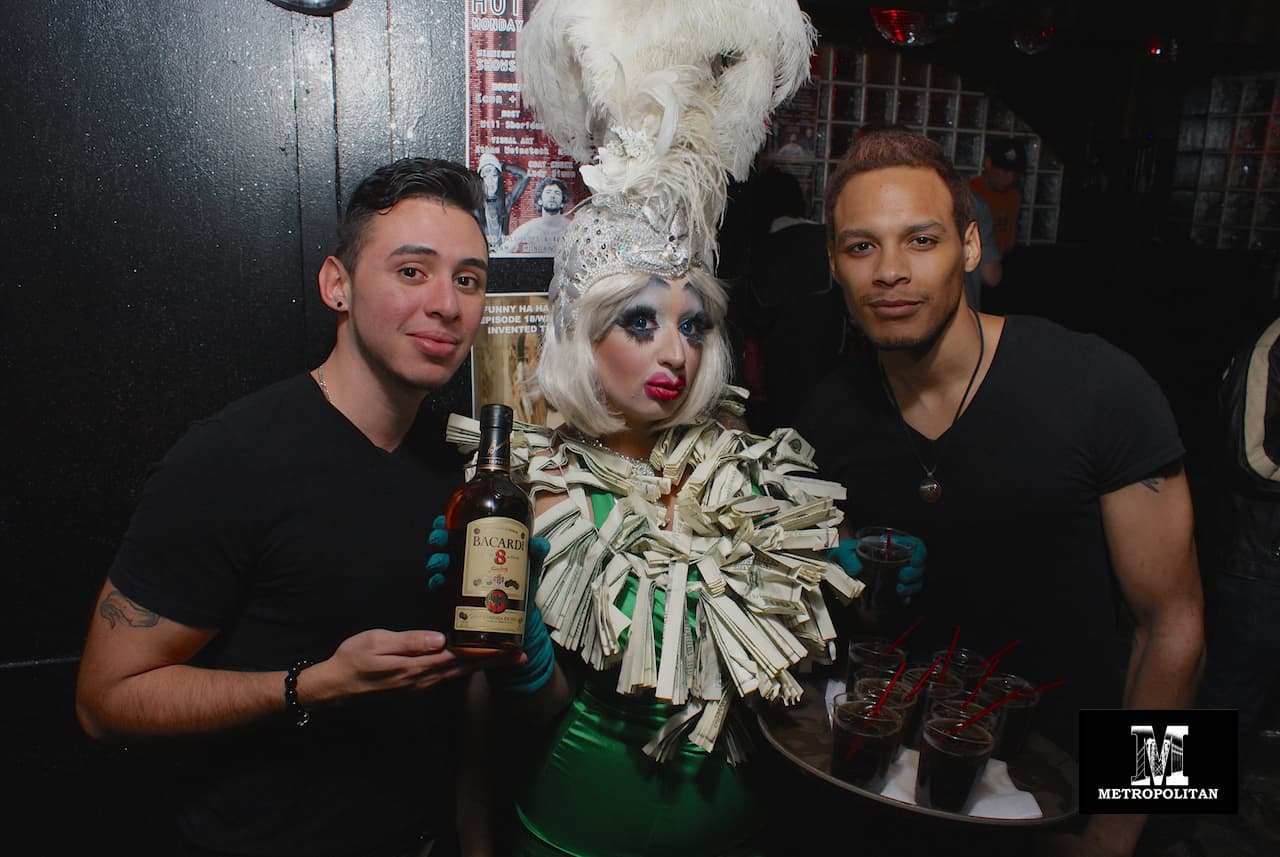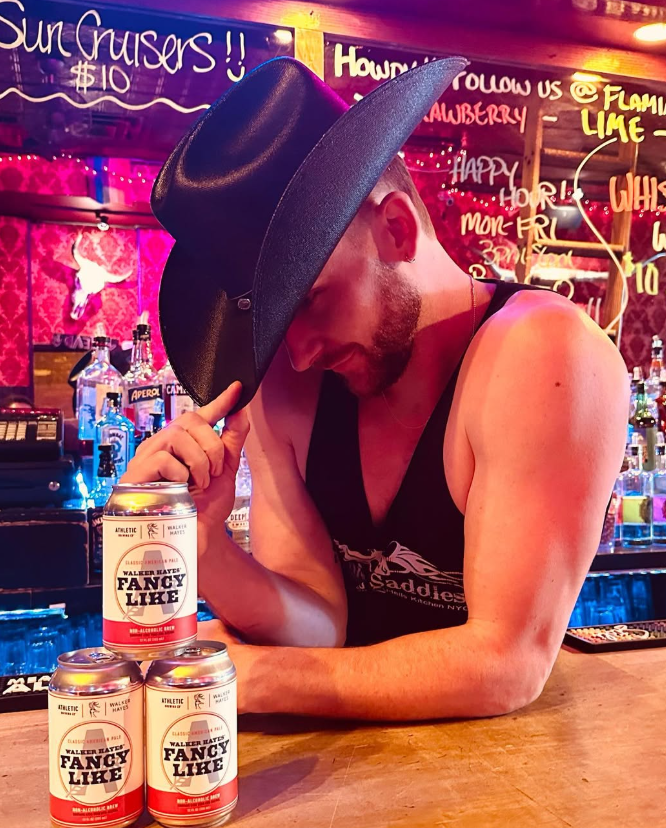
Brokeback to Orville Peck: The Evolution of the Gay Cowboy Image
Saddle up and ride a cowboy
The image of the American cowboy has long been a cornerstone of masculine identity – rugged, stoic, and undeniably straight. The militantly heterosexual archetypes embodied by John Wayne and Clint Eastwood are an American conservative’s wet dream: a man with old-fashioned values who’s not afraid to take the law into his own hands: “Step off mah property, sah!”.
It was only a matter of time until this hyper-masculine image was co-opted by gay men. In this article, we’ll trace the origins of the gay cowboy aesthetic, from the wild frontier to Flaming Saddles Saloon.
Hidden Histories: Gay Cowboys Before Brokeback
Long before Jack Twist and Ennis Del Mar captured the public imagination, gay cowboys were a reality of the American West, though their stories remained largely untold. Historical research suggests that the 19th-century frontier offered unique possibilities for same-sex relationships away from the social strictures of established society. The predominantly male environment of cattle drives and ranches created spaces where intimate bonds could form, even if they weren't openly acknowledged.
In his groundbreaking book "The Gay Cowboys," historian Jim Wilke documented numerous accounts of same-sex relationships among cowboys, with evidence suggesting that while not openly discussed, such relationships were often tacitly accepted within the cowboy community. Yet these stories remained mostly absent from popular culture, with Western films and literature reinforcing the cowboy as the ultimate symbol of heterosexual masculinity. It sure got lonely on the frontier and male bonding was one way to keep warm.
The Brokeback Mountain Watershed
Everything changed in 2005 with the release of Ang Lee's "Brokeback Mountain." Based on Annie Proulx's short story, the film starred Jake Gyllenhaal and Heath Ledger as cowboys who develop a complex romantic relationship spanning decades. The film's impact was seismic – it grossed $178 million worldwide, received critical acclaim including eight Academy Award nominations (winning three), and sparked unprecedented mainstream conversation about homosexuality in traditionally hypermasculine spaces.
"Brokeback Mountain" achieved something remarkable: it brought the gay cowboy into the cultural mainstream while maintaining the authentic grit and complexity of Western life. Importantly, the film didn't soften the reality of being gay in rural America during that era. The story's tragic elements reflected the very real dangers and social costs that LGBTQ+ individuals faced – and in many places, still face.
Ennis Del Mar's tortured relationship with his sexuality resonated with many viewers because it captured a truth about rural queer experience that had rarely been acknowledged in mainstream culture. The film forced audiences to confront the human cost of homophobia while simultaneously humanizing gay love in a setting previously reserved for straight narratives.
Country Music Opens Its Doors
As the cultural impact of "Brokeback Mountain" rippled outward, another significant shift began in country music, a genre historically associated with conservative values. In 2023, the mainstream breakthrough of Orville Peck, an openly gay masked country singer, signaled changing attitudes within the industry. With his signature fringed mask, Elvis adjacent vocals, and unapologetically queer perspective, Peck created space for LGBTQ+ expression within traditional country sounds. It was as if the world of John Waters collided with the world of Waylon Jennings.
Even more prominently, Grammy-winning country artist Lil Nas X shattered barriers with his record-breaking hit "Old Town Road" in 2019, followed by provocative videos and performances that explicitly celebrated his gay identity while embracing Western aesthetics. By combining country music elements with hip-hop and proudly expressing his sexuality, Lil Nas X challenged the genre's traditional boundaries and brought queer cowboy imagery to unprecedented mainstream visibility.
The Country Music Association's increasingly inclusive stance, featuring performances by LGBTQ+ artists at major events, further reflects this evolution. Artists like T.J. Osborne of Brothers Osborne, who came out as gay in 2021, have found growing acceptance within the country music community, suggesting that the industry is gradually becoming more welcoming to artists who stand outside the traditional heterosexual paradigm. In a sense, extracting the latent queerness from the cowboy aesthetic was long overdue. What could be gayer than a man in leather chaps?
Gay Rodeo Culture
While popular culture was catching up, the International Gay Rodeo Association (IGRA) had been nurturing an LGBTQ+ Western sports community since its founding in 1985. The IGRA hosts events across the United States, creating spaces where LGBTQ+ cowboys and cowgirls can compete in traditional rodeo events while being fully themselves.
These rodeos include classic events like bull riding and barrel racing alongside unique traditions like "goat dressing" (a race to put underwear on a goat) that bring a distinctly gay sensibility to Western sports. More importantly, they provide a supportive community for rural LGBTQ+ individuals who might otherwise feel isolated in traditional rodeo circuits.
Cowboy Aesthetics in Gay Bars
Gay bars hosting "country western" nights have proliferated across big cities, with venues like the Round-Up Saloon in Dallas and Oil Can Harry's (before its 2021 closure) in Los Angeles becoming institutions where patrons don cowboy hats, boots, and denim to line dance and socialize. Most prominently, Flaming Saddles Saloon brings the rugged cowboy image to the fey environs of Manhattan: it’s one of our favorite gay bars in New York.
High fashion has also embraced this evolution, with designers like Dsquared2, Versace, and Gucci incorporating Western elements into collections frequently marketed with homoerotically charged imagery. The 2021 Met Gala's "American Independence" theme featured numerous celebrities in reimagined cowboy attire, signaling the mainstream fashion world's embrace of this aesthetic.
Digital Frontiers: Social Media Visibility
Social media has played a crucial role in normalizing the image of gay cowboys, with platforms like Instagram and TikTok providing unprecedented visibility for rural LGBTQ+ individuals living authentic lives. Hashtags like #gaycowboy and #queercountry connect thousands of posts showing diverse expressions of rural gay identity, from working ranch hands to urban enthusiasts cosplaying with Western aesthetics.
The Long Dirt Road Ahead
Despite significant progress, challenges remain for LGBTQ+ individuals in rural Western communities. Many still face discrimination, limited resources, and isolation. Organizations like the IGRA and Rural Pride provide vital support networks, but the lived experiences of gay cowboys often differ dramatically depending on location and community attitudes. It’s easy to romanticize a more rugged lifestyle in the Deep South if you have a HR job in New York.
Yet the cultural evolution continues. Events like Wyoming's "Rendezvous," a gathering near the fictional location of Brokeback Mountain, bring LGBTQ+ outdoor enthusiasts together to celebrate both natural beauty and queer community in rural settings. Filmmaker Luke Gilford's project "National Anthem," documenting queer rodeo culture, brings these stories to wider audiences through photography and film.
In conclusion, if we city dwellers are honest: is anything hotter than a DL rural cowboy sliding into your… let’s just say DMs!
